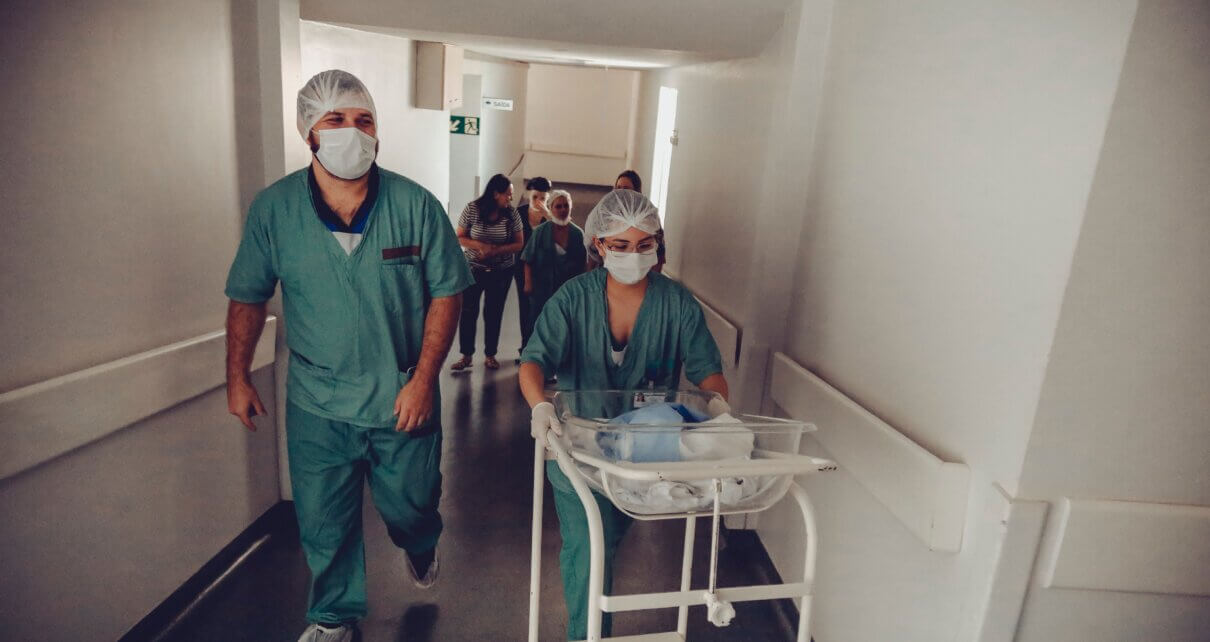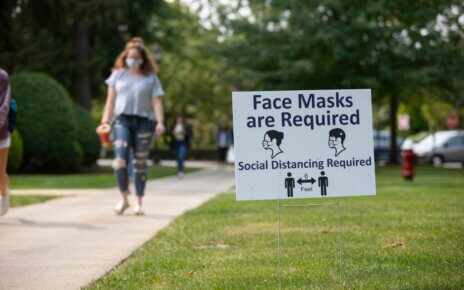Ann Marie P. Mauro, Ph.D., Dean of the School of Nursing and Health Studies, gave a virtual presentation titled “Climate & Health Policy: A Call to Action for Nurses & Healthcare Professionals,” on Monday, Oct. 4.
The brief lecture was part of the University’s “Wake Up to Climate Change” Climate Crisis Teach-In, informing listeners of climate change’s impacts on public health, as well as how nurses and other health professionals can reduce the effects of climate change and improve health through both advocacy and policy.
Climate change is a major public health threat, and the responsibility of combating it often falls to those in the health professions, Mauro explained.
“As health professionals, we are among one of the most trusted professions,” Mauro said. “We are trusted messengers around information on climate and health. As you know, talking about climate and the impact of climate change can be a bit of a political topic. Health professionals tend to be able to talk more objectively about the impact of climate on health.”
For almost 20 years, nurses have been recognized as the most trusted profession, Mauro explained. The World Health Organization confirms nurses to be the largest health profession in not only the United States, but in the world. “Physicians and other health professionals are also very highly respected and trusted,” Mauro said. “As messengers, we get a lot of credibility when we talk about the impact of climate change. Our changing climate is a universal, moral issue that we all need to address.”
Mauro then introduced two professional organizations who have raised a call for climate action “loudly and clearly,” being the American Academy of Nursing and the National Academy of Medicine.
The American Academy of Nursing is an honorary professional society of which Mauro was inducted as a fellow in 2016.
“I explained it to my family as kind of the ‘hall of fame of nursing’, with great humility, of course,” Mauro said. “That’s kind of the best way I can say it, [as] you need to have a national or international sustained impact on nursing over a period of time.
The main vision of the American Academy of Nursing is to transform health policy and practice through nursing knowledge, whether that’s research, policy or practice, Mauro explained. “The Academy has called for nurses to play a pivotal role in responding to and advancing policy related to the impact of climate and health,” Mauro said. “Also, to look at ways we need to assess people, whether it be individual patients, families, communities, or populations.”
Different opportunities to fight climate change are discussed within the Academy, one being the “upstream.”
“An upstream is before the problem happens and before the negative effects of climate change occur,” Mauro said. “The Academy talks about ways that the nurses can work to reduce pollution, including helping to inform and write protective policies for the public and to make sure that climate change regulation is enacted and protected.”
The idea of something being “downstream” refers to the needs that occur after climate change has had an impact. “It’s the essential role that nurses and the entire nursing workforce plays in saving lives during extreme weather conditions, whether they be hurricanes, tornados, floods, or similar disasters,” Mauro said.
The Academy encourages nurses to track public health data and systems to look at the potential effects of climate change and its impact. Training opportunities are provided for nurses and other healthcare professionals to not only prevent climate change, but deal with challenges related to ongoing disasters such as floods.
Next, Mauro introduced the National Academy of Medicine, a professional organization that is part of the National Academies of Science, Engineering, and Medicine. The National Academy of Medicine provides leadership, innovation, and impact for a healthier future, according to Mauro. “The visions are similar for both organizations. They talk about climate change as one of the most significant threats to human health in the 21st century.”
“I am not honored [at the National Academy of Medicine] yet with a membership there, which is a goal at some point, but some of my colleagues are fellows,” Mauro said. “Others are invited as experts to serve on committees and panels, so you don’t have to be a member of the National Academy of Medicine, but you do have to be invited to be on some of these expert panels.”
The National Academy of Medicine seeks to comprehensively assess the health risks of climate change and to develop strategies that address both the drivers as well as the impact, according to Mauro. “They have recently formed a public/private partnership called the Action
Collaborative on Decarbonizing the U.S. Health Sector. It is a partnership of leaders from across the health system at all levels and settings to commit to addressing the sector’s environmental impact while strengthening its sustainability and its resilience.”
Mauro then presented information on prevailing U.S. climate trends. The Northeast has experienced extreme precipitation, evidenced by the recent Hurricane Ida and Superstorm Sandy 7 years ago.
“Especially over the last 3 decades, we see this increase,” Mauro said. “We see more floods in this area, going toward the Midwest and the Northeast. We see more hurricanes in the North Atlantic that are category 4 and 5. Sea levels are rising and we know that as a beach community. That’s an impact on our environment from climate change.”
The Midwest has also experienced rising temperatures, while parts of the Southeast have begun to experience cold waves and winter storms that have increased in intensity and frequency. Extreme droughts have occurred in California and in the Southwest, Mauro explained.
“We know that, largely, the effects of climate change are due to the greenhouse gas emissions that come from many of the developed countries, including the United States,” Mauro said. She then presented data from the U.S. Environmental Protection Agency regarding the sources of greenhouse emissions.
“Transportation makes up the largest amount at 29 percent, which includes fossil fuels for cars, trucks, airplanes, and ships,” Mauro said. “Followed by electricity, which generates the second largest share of greenhouse gas emissions. About 62 percent of our electricity comes from burning fossil fuels, mostly coal and natural gas.”
These greenhouse gas emissions cause climate pressure changes, increasing the temperature and creating more extreme weather patterns and rising sea levels that result in extreme types of precipitation, flooding and snowstorms, according to Mauro.
Exposure pathways include heat waves, air pollution, water contamination, and the lack of potable water worldwide, Mauro said. It is one of the biggest health concerns, particularly for undeveloped countries.
“In my community, we had more yellow jackets this summer,” Mauro said. “Usually, you have one major nest. We had multiple major nests, not only at our house, but in our neighborhood. That’s a change which then can lead to increasing allergens from the pollen and insect bites.”
Other health consequences of climate change include heat stroke, heat stress, respiratory diseases, increases in asthma, cardiovascular and stroke disease, Mauro explained. “Mental health is a real impact of climate change. Stress from the impacts on the climate cause worsening mental health and depression. We see, as well, an increase in violence in areas where there’s extreme heat.”
Consequences of climate change are seen in low income communities who have physical and mental illness risk due to flooding and crowded shelter conditions.
“We see it in terms of communities of color who are risk prone to facing cumulative exposure to multiple pollutants,” Mauro said. “Rural areas are also at risk for having disparities.”
“Upstream, you need to plan, and downstream, you need to implement comprehensive disaster management and help improve resilience for people with limited resources,” Mauro said.



